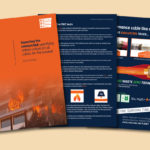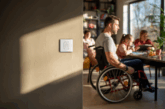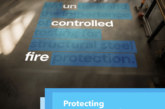How to address serious failures of vital building safety systems through enhanced understanding of cable specification, is at the heart of a new white paper from Wrexham Mineral Cables (WMC).
Published this week, and free to download from the Company’s website, the white paper — titled Expecting the unexpected: specifying safety-critical circuit cables for fire survival — was written in response to a growing frustration at the lack of progress made on building safety as a result of the lessons learned from the Grenfell Tower fire.
WMC shares the view of the London Fire Brigade’s Deputy Commissioner Richard Mills, that “…in many cases the built environment sector is still not seeing a culture change in all those responsible for fire safety in high-rise buildings”.
Cable specification: key to protecting buildings’ ‘beating heart’
Building systems depend on the electricity supply being maintained in order to help keep occupants safe as they evacuate, advises WMC. As several recent high-profile building fires show, when this critical system or so-called ‘beating heart’ fails it causes extra damage to property and puts more lives at risk. The cables that supply those systems are inherent to fire safety.
The purpose of the white paper is to guide and educate specifiers and installers about the impact cable specification has on safety-critical systems. At present, specifiers are presented with a choice between polymeric cables and mineral-insulated copper clad (MICC) cables.
“Buildings and lives are at risk”
The current regime of testing means both cable types are classed as fire-resistant. It creates an impression that the two options are in some way equal. However, as the paper demonstrates, this is not the case and MICC cables are proven to perform to higher safety standards in ‘real fire’ scenarios. But with no requirement for better-performing MICC cables to be used in safety-critical applications, WMC believes building safety, and therefore human life, continues to be put at risk.
Building understanding
After reading this technical paper, specifiers will have a better understanding of how fire performance cables work and their role; fire performance cable testing, and issues with that testing; and why cables classified as fire-resistant might not perform in true fire scenarios.
WMC’s paper concludes with an explanation of the reasons why MICC is the true ‘fire survival’ cable and can make a genuine difference to improving building safety — regardless of progress in the regulatory landscape.
“Important and timely”
Commenting on the launch of the white paper, Colin Hughes, Group Manager at Wrexham Mineral Cables has doubt over the pace and extent of change: “This paper is an extremely important and timely document. Questions over the effectiveness of cable testing regimes and current certification methods are nothing new. For many years, Wrexham Mineral Cables has made the case for better testing standards — especially for fire performance cables. Our paper looks at cable specification in the context of current attitudes towards building safety, and the shifting regulatory landscape — and explains the clear benefits of mineral-insulated copper clad cable — and its role in building safety. We welcome downloads from anyone involved in ensuring the built environment is a safer place.”
Click here to download a free copy of Wrexham Mineral Cables’ white paper: Expecting the unexpected: specifying safety-critical circuit cables for fire survival.










